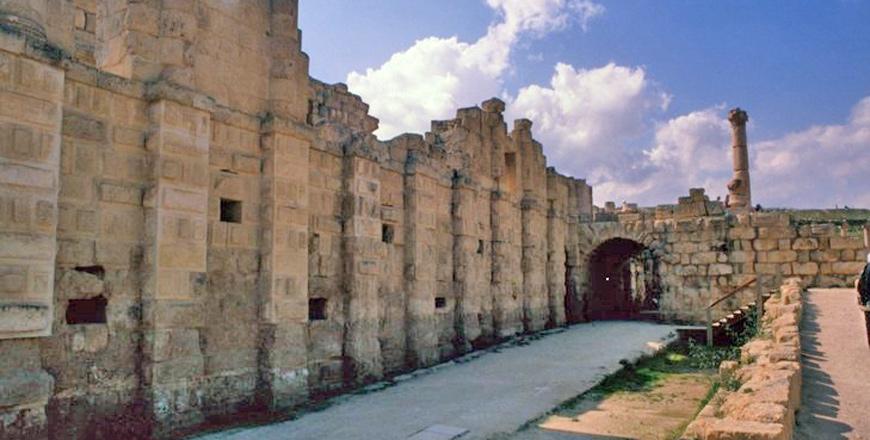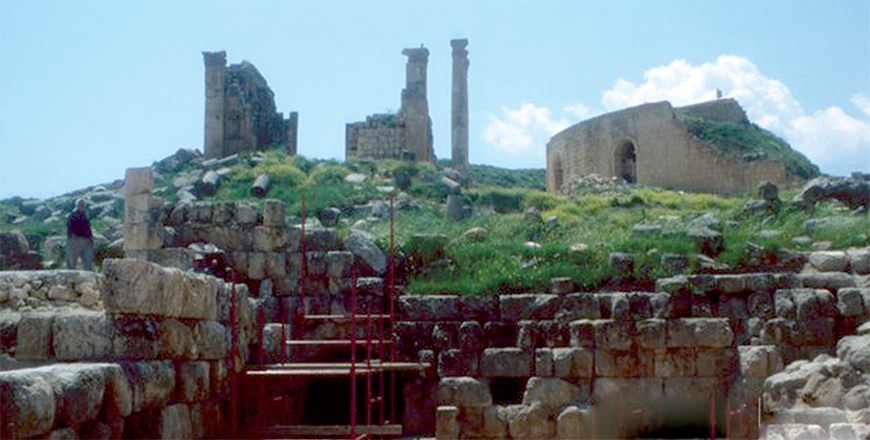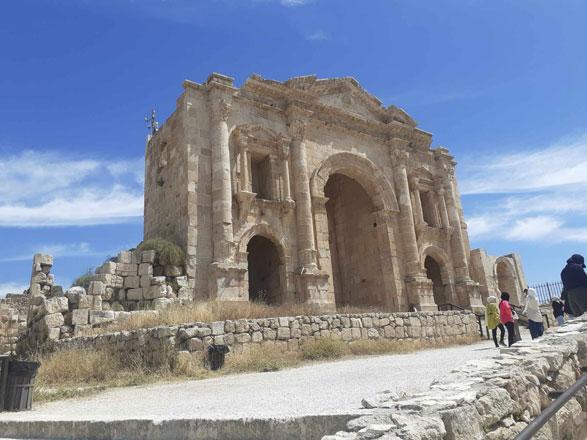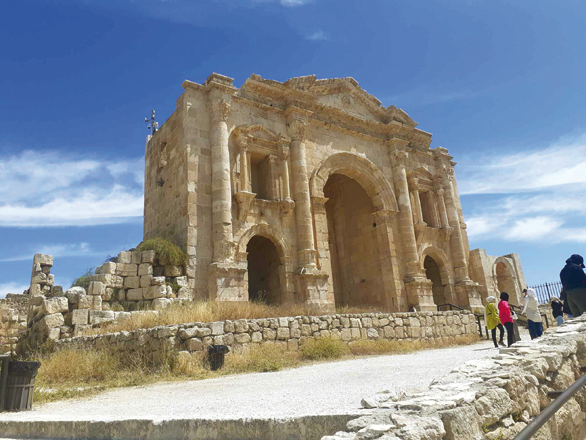You are here
Australian scholar traces foundation of Jerash walls
By Saeb Rawashdeh - Oct 12,2019 - Last updated at Oct 12,2019

The South Gate is also known as Hadrian Arch and the Jerash city wall (Photo courtesy of ACOR/Rami Khouri Collection)
AMMAN — Scholars were unsure about the exact foundation date of the four-kilometre-long city wall in Jerash (ancient Gerasa), noted an Australian archaeology professor.
“I began to question the initial date as parts of the necropolis [graveyard] were kept open while other tombs not far away remained closed, and there must be a reason for that,” said Ina Kehrberg-Ostrasz in a recent interview with the Jordan Times, adding that mapping was one reason, as authorities have built roads and closed down certain areas in modern times.
The team needed at least five excavations to determine the exact date with confidence, Kehrberg-Ostrasz said, adding that the extant remains of the walls are among the best-preserved of any in the Roman Empire.
Digging at the Upper Zeus Temple complex in Jerash helped archaeologists to know whether the temple was built at the same time as the wall, she continued.
“The gates were from the 2nd century AD, so why not the wall?” the scholar said.
The date of the hippodrome — a stadium for equestrian games in ancient times — construction in the first half of the second century suggests that it was part of Emperor Hadrian’s town plan to be constructed outside the city wall, the scholar said, adding that under the foundation of the west city wall, they found joined Roman water-pipes in situ along the foundation wall, supplying water to that part of the city.
“I compared the terracotta pipes with ones used at Humayma in the south of Jordan,” she said.
The pipes were joined withwater-resistant lime and she found fingerprints of children of the potters whose hands were small enough to eneer the necks of pipes to join them with the lime plaster.
The wall and canalisation were planned and built together, and evidence in some foundation trenches suggests that the west wall seems to have been built from the north towards the south, she said.
“We found a lot of pottery and enough coins and other small finds. A lot of ceramics dated to the 2nd century AD but the majority dated to the first and early 2nd century AD or earlier; the ratio between the predominately early and smaller number of generic 2nd century pieces determining the earlier beginning of the construction of the wall,” she stated.
Urban planning of ancient Gerasa and Ottoman Jerash was not unique, allowing “organic” growth, she stressed, adding that empires sometimes encouraged non-indigenous settlements in towns to ensure loyalty without civic interference.
“You had centralised administration, monuments and temples surrounded by residential buildings,” Kehrberg-Ostrasz underscored.
Related Articles
AMMAN — When the Roman Emperor Hadrian visited Gerasa (ancient Jerash) in 129/130 AD, the Roman Empire was at its peak.
AMMAN — In the 1st century BC and 1st century AD, Gerasa (modern Jerash) had operational quarries, which are types of open-pit mines used fo
AMMAN — The major renovation of Gerasa (modern Jerash) took place in the first half of the 2nd century AD when the Roman Emperor Hadrian vis














